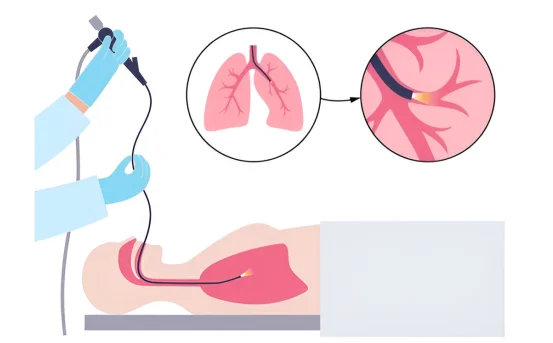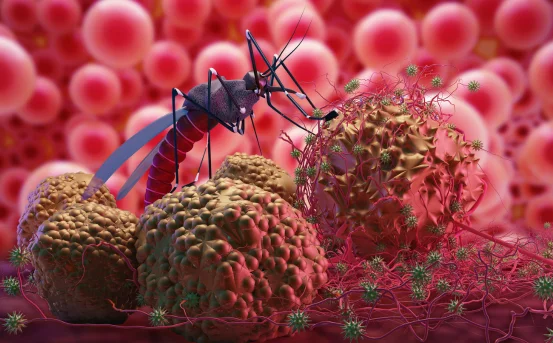Bronchoscopy is one of those procedures that sounds intimidating, yet it’s become a routine, minimally invasive way for doctors to peer directly into a patient’s airways and lungs. The tool at the heart of it all is a slender, flexible tube called a bronchoscope, which carries a tiny camera and, when needed, working ports to biopsy, wash, or even treat abnormalities found along the way. Because it can clarify what chest X-rays and CT scans sometimes cannot, bronchoscopy often acts as the bridge between a worrying symptom and an accurate diagnosis.
But what symptoms for bronchoscopy surgery raise the flag that a bronchoscopy might be in the cards? Persistent coughing that refuses to let up, especially when it produces blood-streaked sputum, is one common red flag. Unexplained wheezing or shortness of breath, particularly when accompanied by an abnormal chest image, can also point the physician toward this procedure. Other signs, such as repeated pneumonia in the same lobe, suspected lung infections that need tissue for identification, or unusual nodules, frequently land patients on the bronchoscopy schedule as well. Getting a clear picture inside the lungs early can make a big difference in choosing the right treatment, so bringing these symptoms to a doctor’s attention sooner rather than later is always wise.
What Happens During the Procedure?
At its core, bronchoscopy is about viewing the bronchi—the main air passages that branch off from the trachea—up close. The procedure begins with the patient settled comfortably in a treatment room and usually receiving light sedation so they remain relaxed but can still follow simple directions. Depending on the case, a pulmonologist may choose flexible bronchoscopy, the most common version used for diagnostics, or less frequently, rigid bronchoscopy, which allows for more direct intervention and bulky equipment, such as the removal of large foreign bodies.
Flexible bronchoscopy typically starts with a local anesthetic sprayed in the throat and nose to dull that gagging reflex, while the rigid form is performed under general anesthesia. In either scenario the scope is gently threaded past the vocal cords, into the branching tubes of the lungs, and images are recorded for reviewing later, sometimes accompanied by biopsies or therapeutic washes to collect secretions. The entire process usually takes no more than twenty to thirty minutes, after which patients are monitored for a short while in recovery before being sent home with simple care instructions.
Why Would Your Doctor Suggest a Bronchoscopy?
A bronchoscopy isn’t something that’s ordered on a whim; it’s a specially targeted procedure. Doctors turn to it when they’re trying to figure out why a patient’s breathing problems won’t clear up or seem to be getting worse. The test can spot serious conditions—things like lung cancer, tuberculosis, or chronic infections—and it helps shape the treatment plan that follows.
Usually, a physician will only recommend this step after looking at earlier, less invasive scans. If routine chest X-rays or CT images show something unusual, or if a patient carries on with troubling symptoms that don’t fit any clear explanation, a bronchoscopy is likely next on the list.
Symptoms That Might Lead to a Bronchoscopy
Understanding the Symptoms for Bronchoscopy Surgery
Here are the most typical complaints that prompt doctors to suggest this procedure:
A Cough That Refuses to Quit :- When a cough lingers for more than two months and over-the-counter syrups haven’t made a dent, something deeper may be at play. A bronchoscopy can peek directly into the airways to check for tumors, persistent infections, or even stray objects that may have been inhaled by mistake.
Coughing Up Blood :- Finding any blood in your phlegm is alarming, and for good reason. This symptom, known as hemoptysis, can spring from conditions as common as bronchitis or as serious as lung cancer. A bronchoscopy zeroes in on the bleeding site so the doctor can act accordingly.
- Wheezing That Won’t Go Away :-While wheezing typically rings alarm bells for asthma or bronchitis, it becomes more puzzling when it shows up in only one lung or hangs around without explanation. In those cases, a bronchoscopy can reveal hidden blockages, abnormal growths, or other airway problems that standard tests might miss.
- Breathlessness or Dyspnea :- Feeling short of breath when you haven’t exerted yourself is rarely easy to ignore. If breathing tests come back normal yet you still struggle to fill your lungs, doctors may turn to bronchoscopy. This flexible tube lets them peek into your airways and check for hidden swelling, blockages, or external pressure from nearby structures.
- Stubborn Lung Infections :- When round after round of pneumonia antibiotics fail to budge your symptoms—especially in older adults or those with weakened immune systems—a bronchoscopy can offer answers. The test safely collects fluid or tiny tissue samples, allowing labs to nail down which germs are causing the trouble.
- Odd Shadows on X-rays or CTs :- If a scan reveals an unexpected mass, lung nodule, or swollen lymph node, the next step may be bronchoscopy. By inserting a slender camera directly into the lungs, physicians can both look and cut out tiny biopsy samples, turning a hunch into a diagnosis.
- Clues Pointing to Lung Cancer :-Symptoms such as unexplained weight loss, persistent cough, chest discomfort, and a raspy voice—paired with worrisome scan results—raise the cancer alarm. To settle the question, doctors thread a bronchoscope to collect bits of tissue, confirming or excluding malignancy in one sitting.
- Wheezing Stridor :-A harsh, high-pitched wheeze can signal something pressing on the upper airway. Because time can matter, doctors use bronchoscopy to quickly find whether the culprit is a tumor, lodged food, or an airway that has collapsed shut.
- Ongoing Hoarseness or Voice Changes :- Changes to your voice that hang around longer than a cold can hint at lurking tumors pushing on the vocal cords. Bronchoscopy gives specialists a clear look along the entire tracheobronchial pathway, letting them spot problems that might otherwise go unnoticed.
- Foreign Bodies Stuck in the Windpipe :- Doctors see this problem pop up most often in toddlers and older folks. Tiny toys, bits of food, or even small dentures can get stuck in the breathing tube and stop air from moving freely. A bronchoscope lets physicians both spot the blockage and pull it out in one go, saving the patient from going through two procedures.
When is it Time to Call a Doctor?
Symptoms like wheezing, coughing that won’t quit, or sudden shortness of breath are big red flags. If those signs hang around longer than you’d expect, don’t wait—get checked out. Your provider might recommend a bronchoscopy to set the diagnosis straight and kick off the right treatment. The sooner a problem is caught, the smoother the recovery usually goes.
What Happens During a Bronchoscopy?
Despite the name, this “surgery” is anything but heavy-duty. Most people go home the same day. Here’s the rough timeline:
- You’ll get a bit of sedation first, so you’re comfy and relaxed.
- Then the doctor gently slides a thin tube—called a bronchoscope—through either your nose or your mouth.
- A camera on the scope beams pictures to a monitor, letting the team peek straight into your airways.
- If they see something suspicious, they might grab a tiny sample or wash some fluid for testing.
- From start to finish, the whole thing usually wraps up within half an hour to an hour.
- Afterwards, you’ll hang out in recovery for an hour or two until the sedation wears off.
Why Doctors Choose Bronchoscopy
This tool is a workhorse for lung specialists. It pinpoints what’s causing the trouble, spots cancers early, yanks out lodged objects, and gathers tissue samples to help diagnose everything from tuberculosis to rare fungal infections. In short, it routinely changes the course of treatment for the better.
Risks and Considerations
Like any medical procedure, bronchoscopy isn’t entirely risk-free, but serious problems are rare. Most patients report only minor inconveniences, such as a sore throat or a touch of hoarseness afterward. A little bleeding from the airways may occur, and a low-grade fever isn’t unheard of. Very occasionally, more serious issues can arise, including a small lung collapse or sudden difficulty in breathing. Because these risks, although uncommon, can be significant, it’s wise to have the test performed by a certified pulmonologist or a dedicated chest specialist who follows strict safety protocols.
Conclusion
Bronchoscopy is a cornerstone tool in respiratory medicine. When physicians recognize the key symptoms that signal the need for the procedure, they are able to make accurate diagnoses and roll out effective treatments. So if you or someone close experiences persistent cough, wheezing, or puzzling findings on a chest scan, don’t brush those signs aside. The sooner you pursue answers, the greater the chance for a positive outcome. Seek prompt medical guidance—healthy lungs are vital for a vibrant life.























